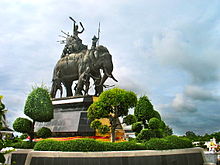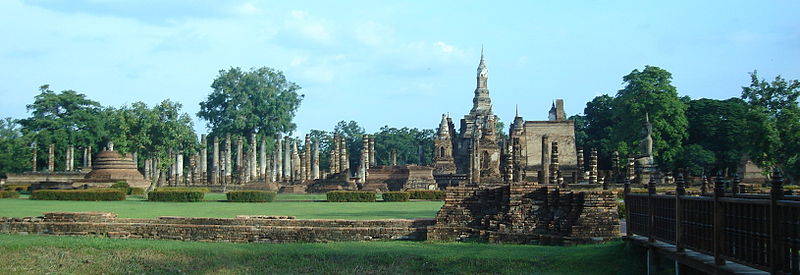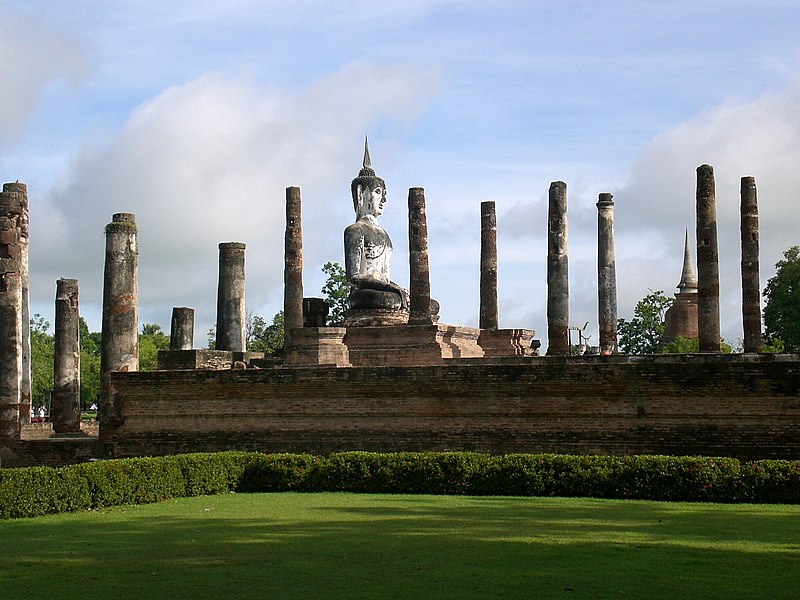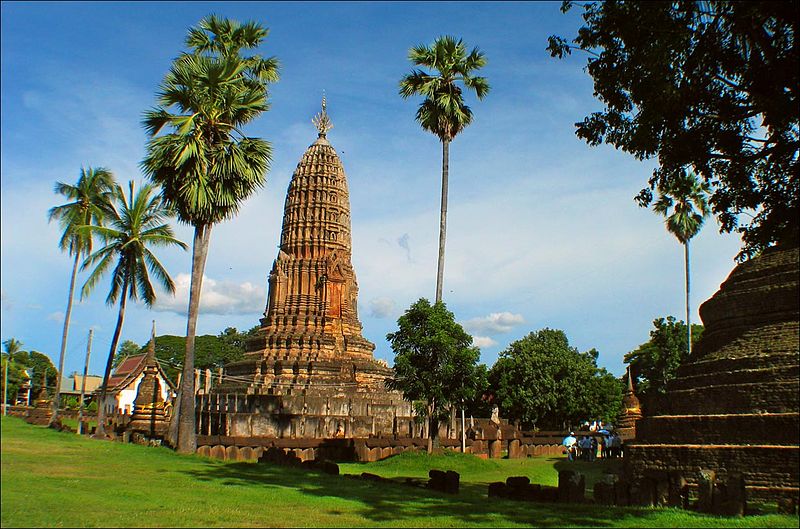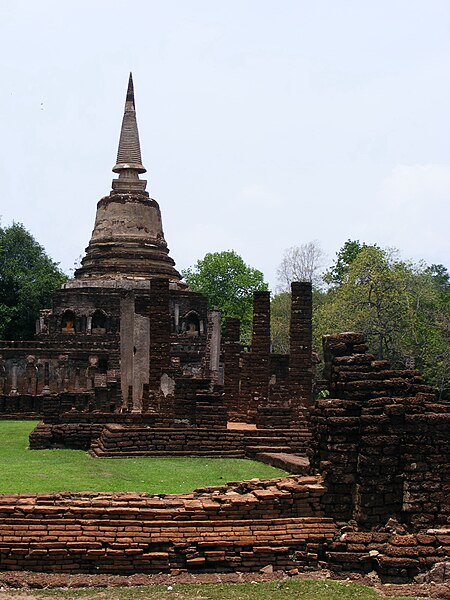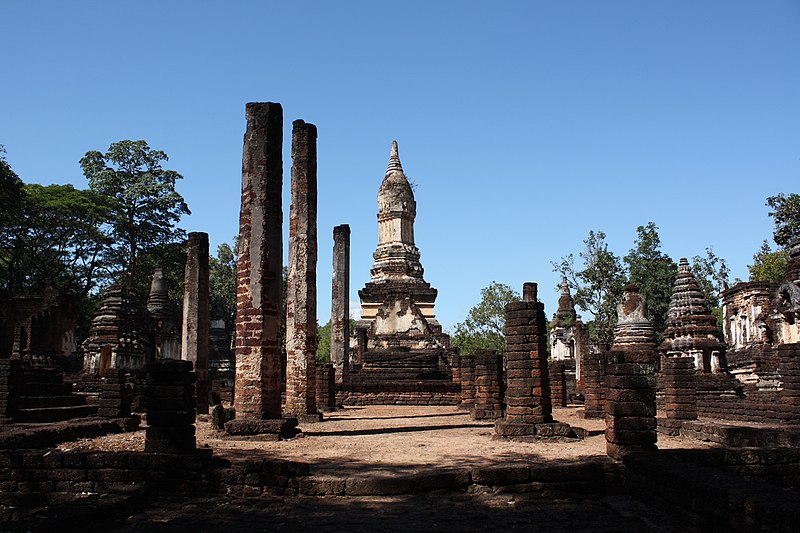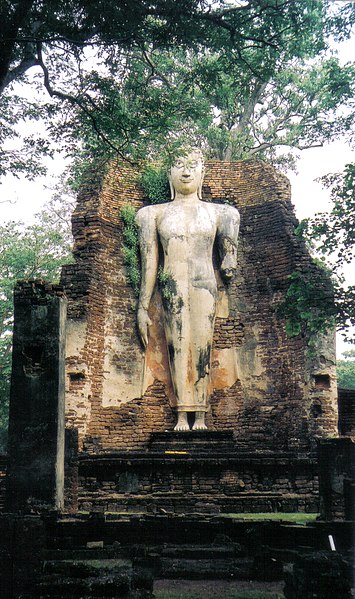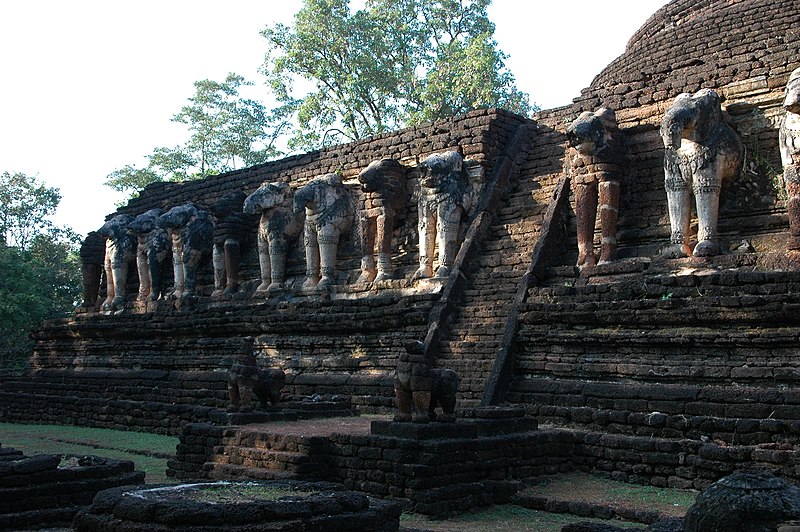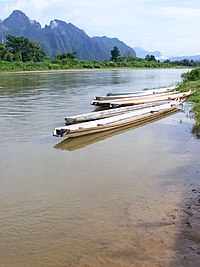Wat Yai Chai Mongkhon (Thai: วัดใหญ่ชัยมงคล) or the “Great Monastery of Auspicious Victory” is located off the City Island in the southeastern area at present Tambon Phai Ling. In the past it bears other names as Wat Pa Kaeo, Wat Chao Phraya Thai and Wat Yai Chaya Mongkhon. A large Chedi of this Wat can be seen from a far distance. People come to play respect and many tourists are seen here especially during weekends.
The easiest way to reach this active monastery is by turning south at the roundabout chedi on Rojana Road (Wat Sam Plum) along road No 3059. The temple can be easily found at the eastern side of the road. Wat Yai Chai Mongkhon is situated in a part of the ancient city known as Ayodhya. It is widely believed that a Dvaravati (and Lopburi allied) settlement existed here before King U-Thong established Ayutthaya in 1351.
There are indications that the site was surrounded by a large moat in earlier times. The monastery was accessed before by Khlong (Pak) Khao San, which got its mouth at the new Pa Sak River. There are also traces of an ancient canal east and west of the temple; the latter ran, parallel with Khlong Khao San, also towards the Pa Sak River.
There are seemingly traces from an ancient barrier or water reservoir, close to the southwestern tip of the monastery. It could thus be that Wat Yai Chai Mongkhon has been built on a former important Khmer temple complex - taken also in account the large moat which represented for the Khmer, the oceans that surround the world.
In 1592 King Naresuan (r. 1590-1605) defeated the Burmese Army at Nong Sarai by killing the Burmese Crown Prince in single-handed combat on elephant. In the battle the King and his brother King Ekathotsarot got separated from their army officers. On return to Ayutthaya the King wanted to punish to death his officers, but the Supreme Patriarch intervened and requested the punishment to be suspended; which King Naresuan granted. “The Royal Chronicles of Ayutthaya” although, state nothing about the construction of the great chedi. It is assumed that, on this occasion, King Naresuan ordered the restoration and enlargement of the temple and the principal chedi. The chedi was named Phra Chedi Chaya Mongkhon. Presumably this celebration gave rise to the temple’s new name, Wat Yai Chaya Mongkhon - The Great Temple of Auspicious Victory.
The Phraya of Tak (the later King Taksin) was promoted to Phraya Kamphaeng Phet by the Siamese King Suriyamin (Ekathat) and appointed as a brigade commander of a boat army that he had to constitute at this monastery in order to confront the Burmese in the open plains southeast of Ayutthaya end 1766. In 1767 the temple was sacked by the Burmese and the premises deserted. The monastery was re-established and officially recognized in 1957.
Viharn Phra Phuttha Saiyat or the Vihara of the Reclining Buddha was constructed during the reign of King Naresuan. The new image was remodeled in 1965 after the original got ruined by fortune hunters. The statue lies in a north-south position, with its head in southern direction and facing the east.
In 1979 the abbot, Phra Pawanarangsi, in coordination with the Fine Arts Department constructed a new ordination hall on the old remains, maintaining partly the ancient site, so that the original structure remains visible.
The chedi of Wat Yai Chai Monglhon is one of the landmarks of Ayutthaya, standing high, and visible to all, who approach the city from the east, at par with Chedi Phukhao Thong. The bell-shaped principal chedi stands on an elevated square base with smaller chedis at the corners. There is a second octagonal pedestal above the base to accommodate the bell-shaped body. Stairs lead up on the east side towards the first terrace, and continue inwards the dome. Inside the dome we can see the chamber where the relics were contained. Two mondops stand in the front, with their pyramidal upper structures collapsed, exposing the Buddha statues inside.
 A rectangular gallery encircles the principal chedi. The gallery is enclosed by an outer wall, which along with the pillars inside, supported before the roof. Presently only the foundations of the pillars can be seen. The floor of the terrace is as usual one step higher than the court. Along the inner wall of the gallery are rows of (newly sculpted) Buddha images on decorated bases.
A rectangular gallery encircles the principal chedi. The gallery is enclosed by an outer wall, which along with the pillars inside, supported before the roof. Presently only the foundations of the pillars can be seen. The floor of the terrace is as usual one step higher than the court. Along the inner wall of the gallery are rows of (newly sculpted) Buddha images on decorated bases.The ordination hall or ubosot lies east and in the front of the large chedi. The hall measures 16 m by 44 m and has been re-roofed to preserve it from further damage. Phra Phuttha Chaiya Mongkhon in the ordination hall is one of the most sacred Buddha images in Ayutthaya.
At the western side of the great chedi was a large vihara measuring 15 m by 39 m, nearly extending towards the outer boundary wall. In the area around the monastic structures we see more than twenty satellite chedis of various sizes which contain the ashes of former sponsors of this temple.
The area of the monastery has been extended towards the east. A viharn has been built to honor King Naresuan. The present entrance is situated between the monastery and the monk’s living quarters at the northern side.
Source: http://www.ayutthaya-history.com
Images: http://commons.wikimedia.org/wiki/Category:Wat_Yai_Chai_Mongkon
Images: http://commons.wikimedia.org/wiki/Category:Wat_Yai_Chai_Mongkon



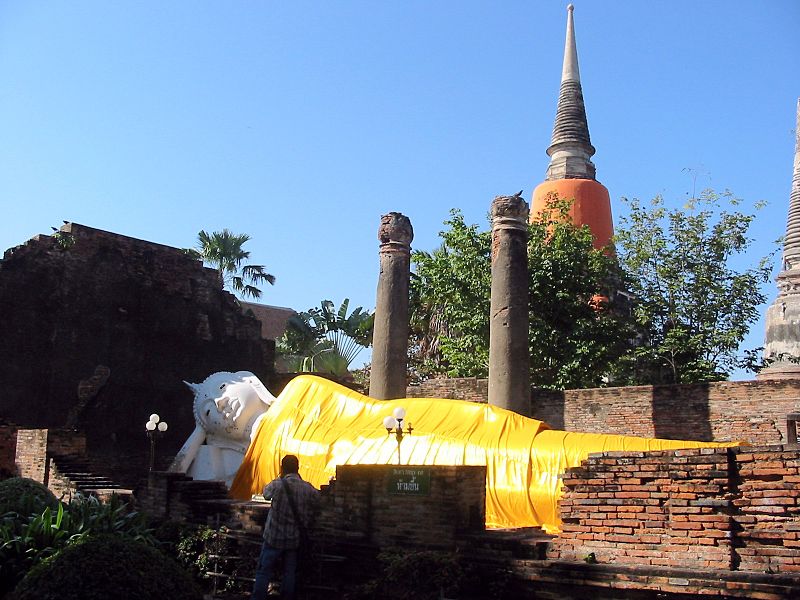
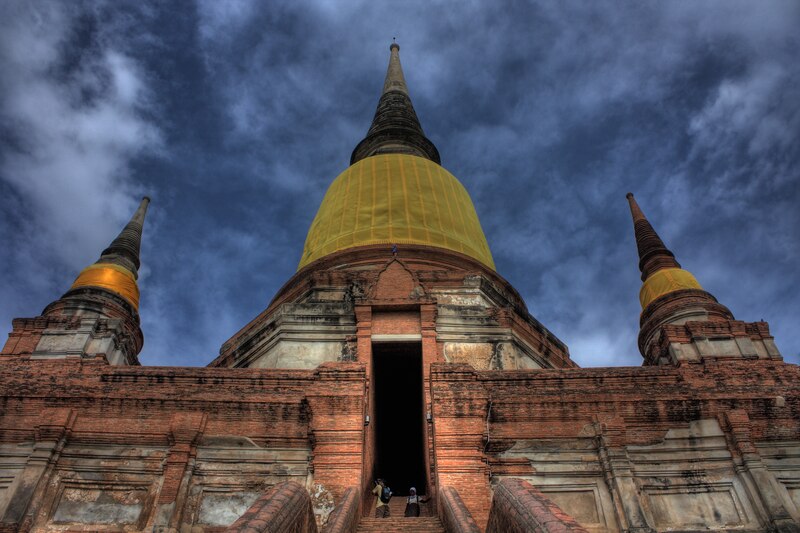

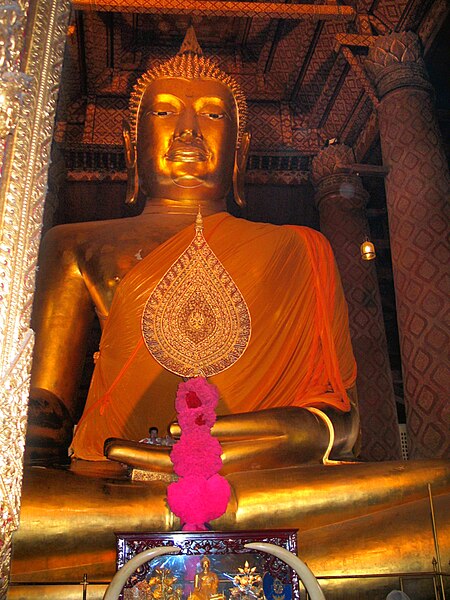
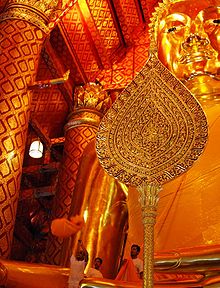

.jpg/800px-Wat_Phu_Khao_Thong_(Ayutthaya).jpg)



